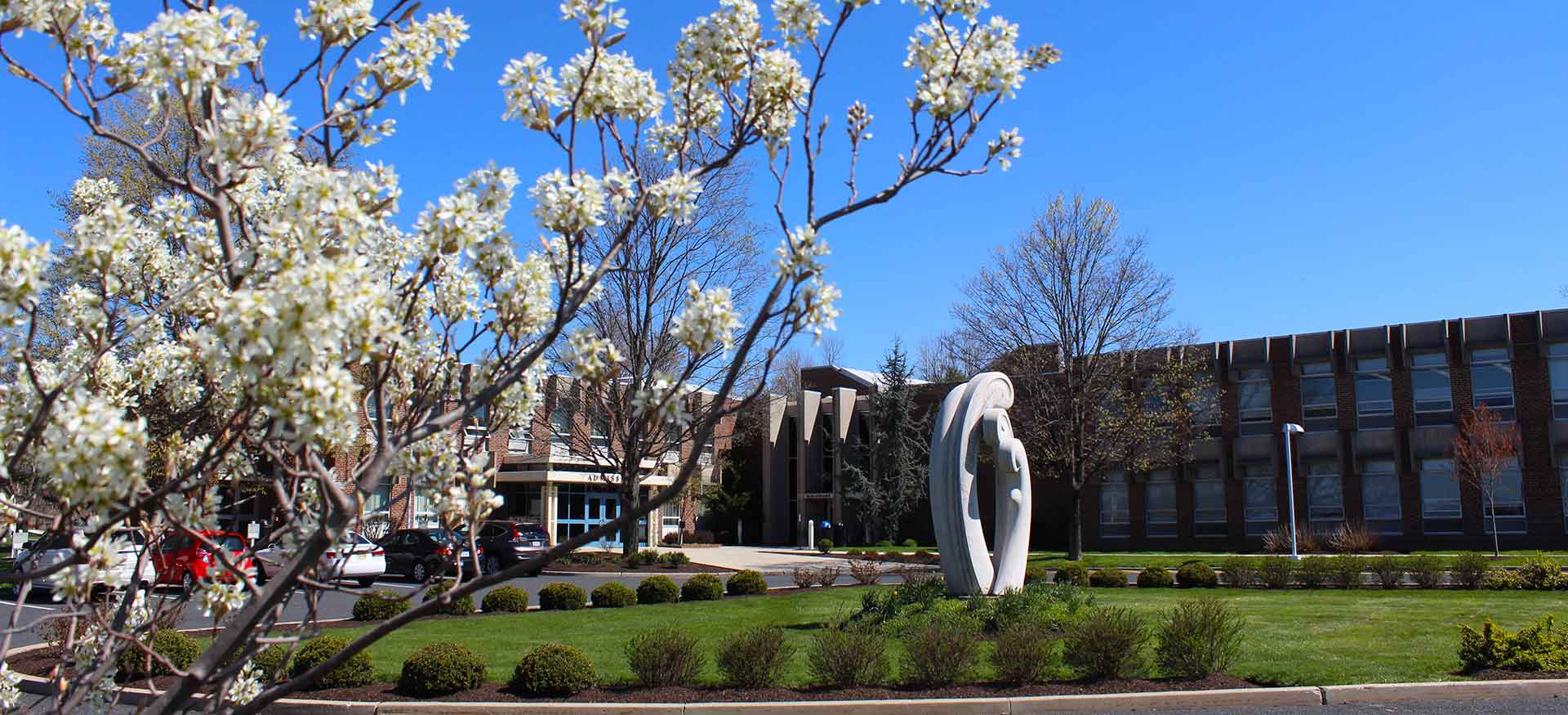The Cricket Keepers of the Hurd Science Center
DeSales students are learning how to modify DNA by studying embryonic mutations, like headless cricket embryos. Crickets are morphologically diverse, which makes them ideal to study embryonic development in Dr. Austen Barnett’s research lab. It’s so advanced that we’ve had students present at conferences and receive internships at Harvard!
Behind a closed door in the Priscilla Payne Hurd Science Center, dozens of crickets live under lockdown.
The insects, which are considered invasive, came from a research lab at Harvard University and landed in the Lehigh Valley only after a lengthy government inspection.
“They would be a threat to our crops and ecosystem because they’re non-native to the U.S.,” says Dr. Austen Barnett. “There’s no natural defense against these things getting out.”
“If you want to learn about how a gene works, you turn it off and see what happens. We’re systematically turning off genes that we’re interested in to see what happens.”
The assistant professor worked with the crickets during his post-doctoral research at Harvard. But bringing them back to DeSales was no small feat. He had to apply for a permit with the U.S. Department of Agriculture—a process that took months.
During that time, Barnett modified the small room in Hurd by blocking all of the drains and installing door sweeps and mats—all to ensure the crickets could never escape. The room also required a freezer to freeze the bodies of the dead insects before getting rid of them.
“[If they did get out] I would be fined, and they could shut down our research,” he says. “So it’s very important that we take every precaution necessary to keep them here.”
Barnett got the final seal of approval after a USDA inspector visited campus. Once he had the green light, he took several of his students to Harvard to pick up the crickets and tour the Ivy League school’s research labs.
“I have students who are deciding to go to grad school, and they previously didn’t know that was an option before they joined the lab.”
Dr. Austen Barnett, Assistant Professor
Barnett’s lab focuses on insects because of their diversity. Students spend a majority of their time dissecting embryos. They also alter the insects’ DNA, injecting mother crickets with a double-stranded RNA to turn off some of their genes.
“If you want to learn about how a gene works, you turn it off and see what happens,” he says. “We’re systematically turning off genes that we’re interested in to see what happens, to see what craziness we can make.”
Part of that craziness means working with embryonic mutations, such as headless cricket embryos. The embryos only develop up to a certain point before things shut down. But that’s exactly why Barnett uses them.
“Whenever you look at these mutations, you want to catch them early on in embryogenesis because that can tell you when and where that gene is active.”
Barnett is a trained evolutionary developmental biologist. He stresses the importance of teaching his students both molecular and developmental biology—research that can show how different animals use the same genes. His main research interest lies in animal evolution in the context of embryonic development.
“If you go back to the last common ancestor of all animals, some 580 to 500 million years ago, we now know that they had a common set of genes that were used during embryonic development. All the ancestors of that last common ancestor— including us, sponges, sea anemones, all of these things—we have a common set of genes. So my question is: how do you get the diversity of life using that common set of embryonic genes?”
As a college student, Barnett initially thought about going to medical school or becoming a high school teacher. But his career path became clearer during his senior year, when he started doing research with one of his professors.
“He was a developmental and evolutionary biologist. I thought this was amazing. I didn’t know that you could make this a career.”
Barnett’s professor encouraged him to go to graduate school, where he fell in love with the field. Now, he’s the one guiding students toward their future careers in science.
“I have students who are deciding to go to grad school, and they previously didn’t know that was an option before they joined the lab. It makes me feel really good. I’m always excited to see students interested in doing basic science and trying to discover stuff about the world.”





